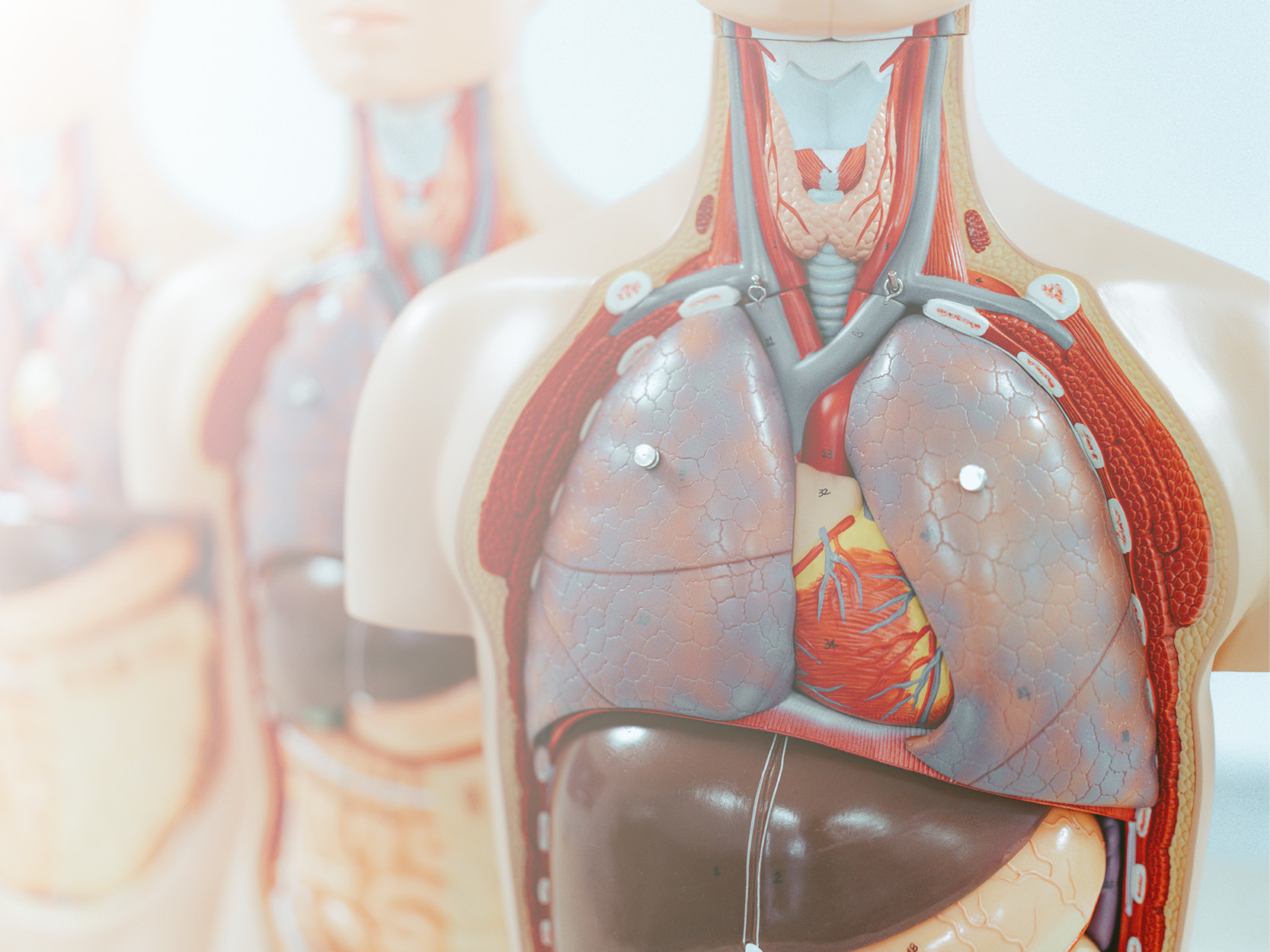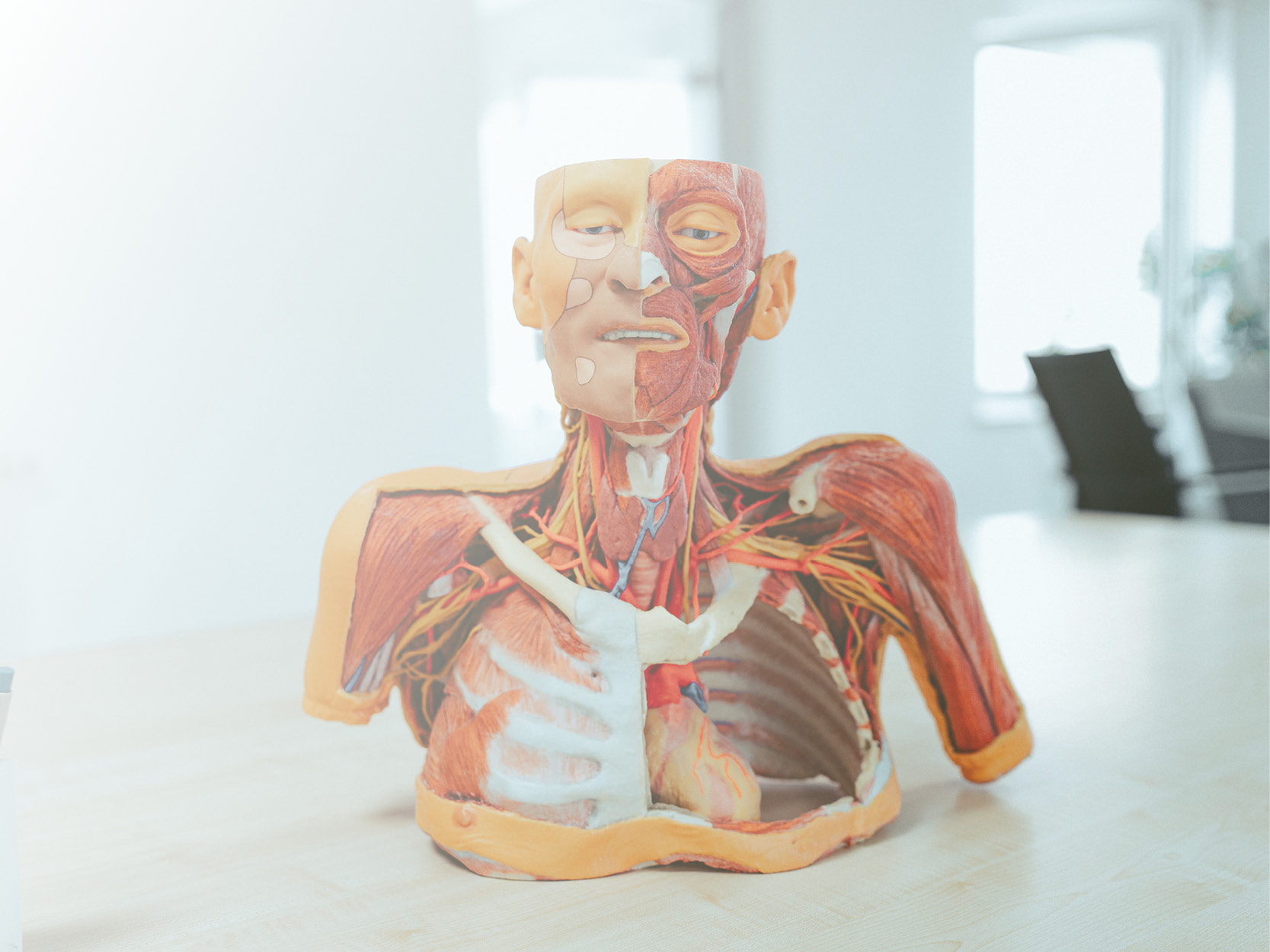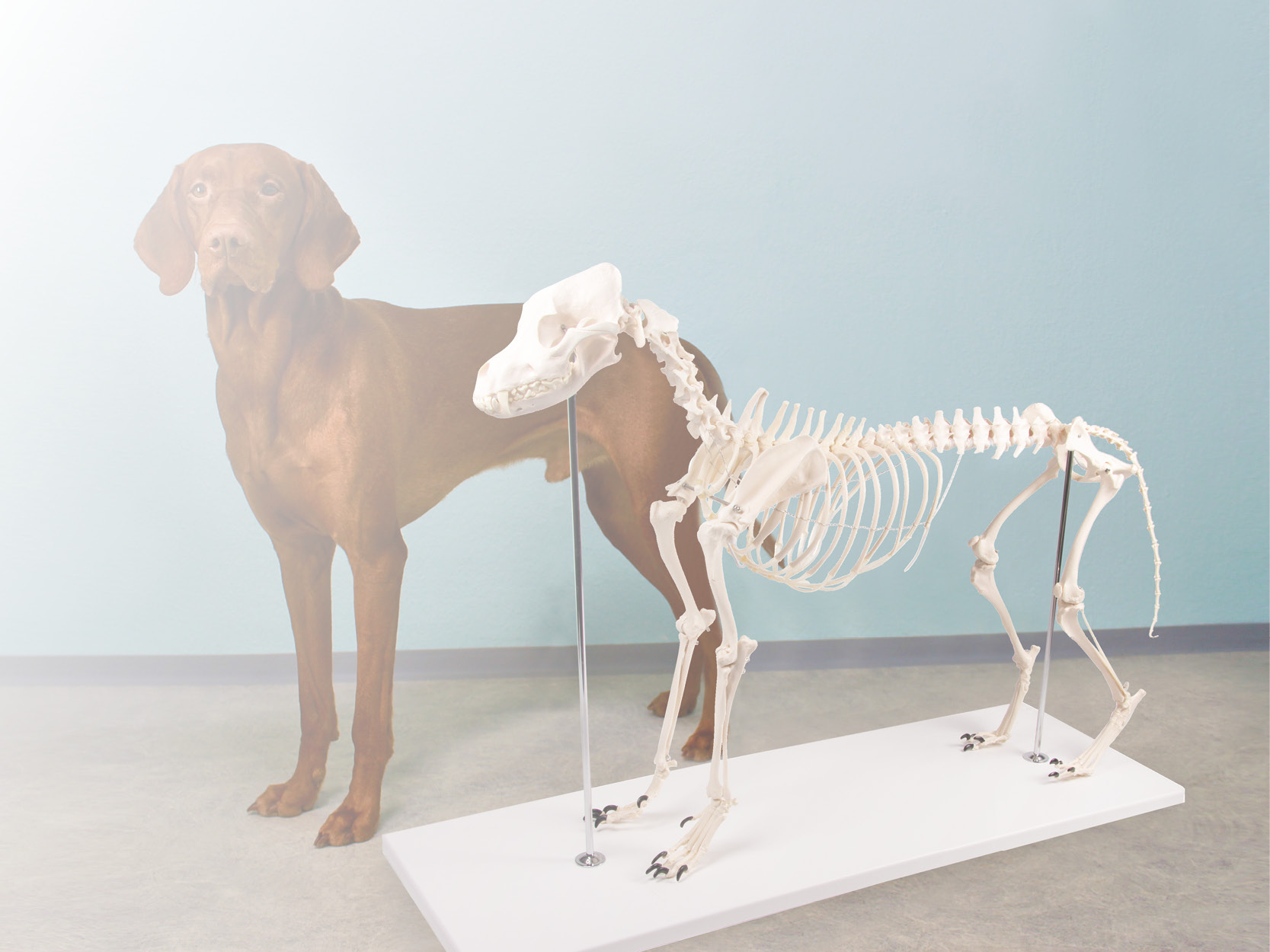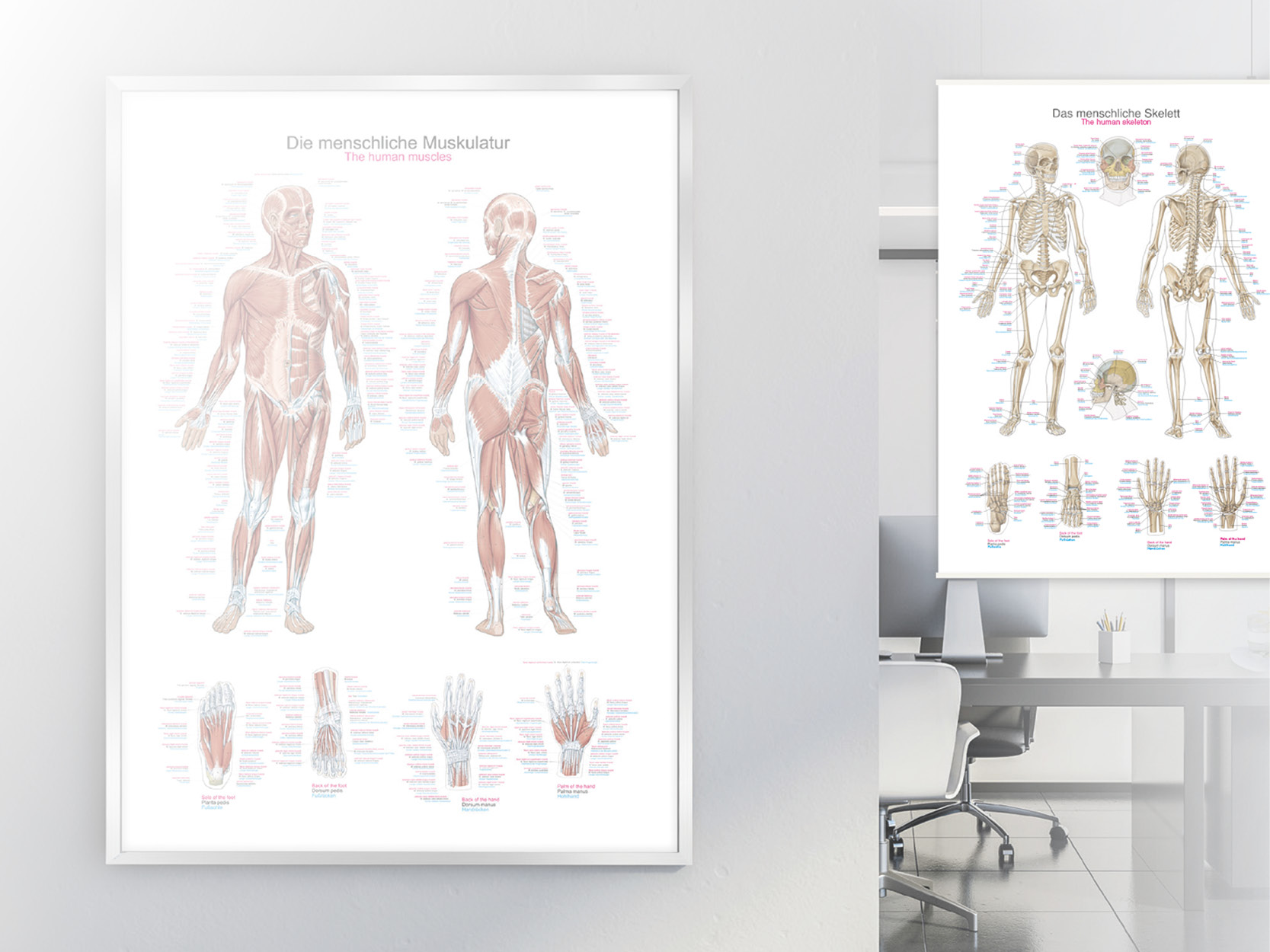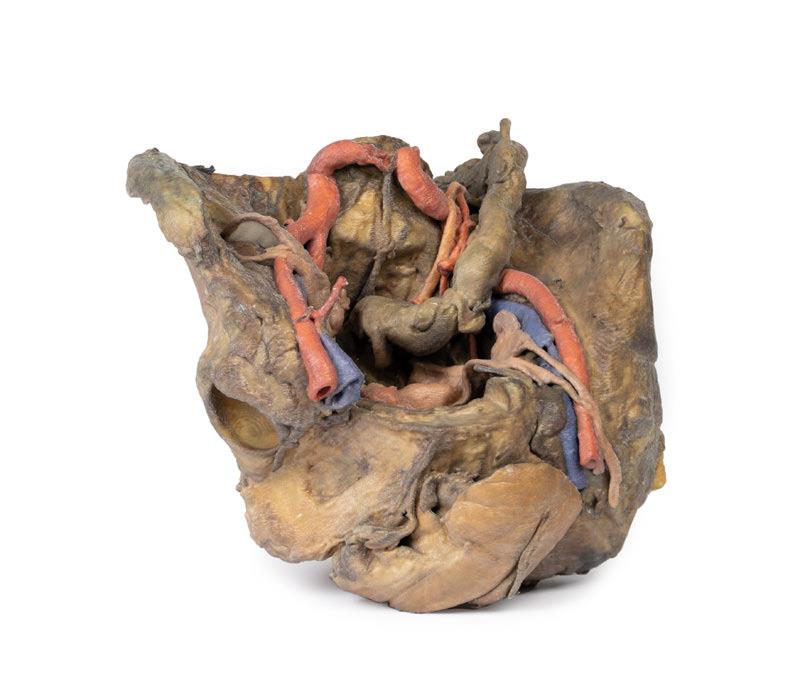Pelvis
3
infinitescrolling.productCount.produkte
Female pelvis deep dissection
5 472,81 €*
This 3D model presents a deep dissection and isolation of the pelvis from surrounding regions, particularly demonstrating visceral and neurovascular structures relative to deep ligaments and osseous features.Within the false pelvis, the sigmoid colon descends on the left side of the specimen to the rectum, passing superficially across the pelvic brim and the passage of the common and external iliac artery and vein. Adjacent to the sigmoid colon are parts of the sigmoid arteries and superior rectal artery, resting superficial to the common iliac vessels and near the descending ureter. Anterior in the true pelvis is the collapsed urinary bladder, and between the bladder and rectum rests the uterus. The organ is partially covered in the broad ligament, with both the suspensory ligament of the ovary and round ligament have been separated and pulled away from the peritoneum on both sides to expose surrounding blood vessels. While the ovarian ligaments, round ligaments, uterine tubes and ovaries are trapped within the peritoneal fold of the broad ligament, the reduction in ovary size (common with advanced age) has rendered these indistinguishable in the model.Lateral to these organs, branches of the internal iliac artery can be identified – as well as a retained median sacral artery in the midline between the two common iliac arteries. On the left side only the uterine artery can be seen laterally. On the right side, the obturator, superior vesical, and uterine arteries can be observed. In addition, the origins of the inferior epigastric artery and vein can be seen arising from the external iliac vessels just prior to exiting the inferior abdominal cavity.On the right side of the preserved pelvis, the entire femur and thigh musculature has been removed to demonstrate the obturator membrane, the articular cartilage of the acetabulum and the transverse ligament of the acetabulum. Posteriorly the entire gluteal region has been dissected to expose the superior gluteal foramen and the origin of the superior gluteal artery. The sacrotuberous ligament has been removed to demonstrate the sacrospinous ligament, with some branches of the inferior rectal artery retained within the exposed ischoanal fossa.On the left side of the preserved pelvis the sciatic nerve has been maintained within the greater sciatic foramen, as has the sacrotuberous ligament. The ischioanal fossa mirrors that of the right side, where branches of the inferior rectal artery have been retained relative to the fibres of the pelvic diaphragm, and the integration of the external anal sphincter on the projecting external rectal surface.
Male hemipelvis and thigh
5 853,61 €*
This 3D model preserves a right male pelvis sectioned just superior to the L5 vertebra and sectioned at the midsagittal plane, with the thigh preserved to near the midshaft of the femur. This specimen compliments our LW 91 female hemipelvic specimen and thigh.The common iliac artery is preserved with several key branches visible, particularly the distribution of the internal iliac within the true pelvis. Several major vessels including the obturator artery and the partially obliterated umbilical artery passes towards the anterior abdominal wall (to form the medial umbilical ligament) and gives off the superior vesicle artery; while the roots of the iliolumbar, superior gluteal, inferior gluteal and internal pudendal artery are visible lateral to the urinary bladder. The ureter descends superficial to these vessels to approach the urinary bladder which is covered with peritoneum in this model. The ductus deferens is exposed from the entry into the space via the deep inguinal ring and passing posteriorly (though sectioned from its normal insertion pathway and resting on the internal iliac artery). Adjacent to the ureter and on the superficial surface of the psoas major muscle is an enlarged iliac lymph node and part of the lymphatic vasculature ascending along the external iliac artery. The majority of the pelvis has been left undissected, allowing for an appreciation of the rectovesicular pouch and the exposed superior rectal artery and vein approaching the preserved portion of rectum. In cross section, the rectum, seminal vesicle and prostate are visible (the section plane preserves parts of both the prostatic urethra and ejaculatory duct).In the anterior thigh the borders and contents of the femoral triangle are well-preserved, with partial coverage by the flap of the anterior abdominal wall. Posteriorly the skin over the gluteal region and the gluteus maximus muscle have been removed as sequential windows to expose the gluteus medius and minimum muscles, the piriformis, the obturator internus with gemelli muscles, and the quadratus femoris muscle. The superior and inferior gluteal arteries are maintained superior and inferior to the piriformis, respectively; with the sciatic nerve exiting inferior to piriformis before passing deep to the retained portion of the gluteus maximus.
Female hemipelvis and thigh
3 292,73 €*
This 3D model preserves a left pelvis divided at the midsagittal plane, and the proximal thigh to approximately the midthigh.
Des répliques de corps humains pour améliorer l'enseignement !
La série révolutionnaire d'anatomie d'Erler- Zimmer comprend une collection unique et inégalée de répliques de corps humains colorées, spécialement conçues pour améliorer l'enseignement et l'apprentissage. Cette collection haut de gamme d'anatomie humaine extrêmement précise a été créée directement à partir de données radiologiques ou de préparations réelles à l'aide des dernières techniques d'imagerie. La série d'anatomie humaine 3D offre un moyen rentable de répondre à vos besoins spécifiques en matière d'enseignement et de démonstration dans l'ensemble du programme d'études de médecine, de sciences de la santé et de biologie. Une description détaillée de l'anatomie représentée dans chaque préparation imprimée en 3D est fournie. Quels sont les avantages de la série Anatomie 3D de Monash par rapport aux modèles en plastique ou aux véritables plastinats humains ?
Chaque réplique de corps a été soigneusement développée à partir de données radiologiques de patients ou de corps humains préparés de la plus haute qualité, sélectionnés par une équipe d'anatomistes hautement qualifiés au Centre d'enseignement de l'anatomie humaine de l'Université Monash, afin de représenter des zones cliniquement importantes de l'anatomie avec une qualité et un niveau de détail impossibles à obtenir avec des modèles conventionnels - il s'agit d'une véritable anatomie, pas d'une stylisation. Chaque réplique corporelle a été rigoureusement contrôlée par l'équipe d'anatomistes hautement qualifiés du Centre d'enseignement de l'anatomie humaine de l'Université de Monash, afin de garantir l'exactitude anatomique du produit final. Les répliques de corps ne sont pas de véritables tissus humains et ne sont donc soumises à aucune restriction en matière de transport, d'importation ou d'utilisation dans les établissements d'enseignement qui ne sont pas autorisés à utiliser des cadavres. Le site
série exclusive Anatomie 3D évite ces problèmes et d'autres problèmes éthiques qui surviennent lorsqu'on manipule des restes humains plastinés.





